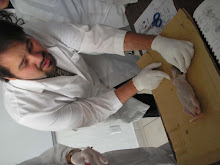Percent Yield
With this term, there are two types of such meaning,
1.Actual Yield: The amount of product that actually forms is carried out in the lab.
2.Theoretical Yield: the maximum amount of product that could formed from given amounts of reagents.
An example: Xgrams + Ygrams= 200g in a theoretical yield,
Xgrams+ Ygrams = 195g as a result of the actual lab, this is the actual yield.
The Percent Yield is used to compare the theoretical yield to the actual yield. And to demonstrate this we use ratios.
Example 1: If your T.Y(theoretical yield) is 200g, and your A.C(actual yield) is 195, your ratio will look like this:
195x 100%=97.5%
200
so your 97.5% is your ratio of T.Y to A.Y
Concentrations of Solutions
Before beginning the class we reviewed the meaning of Concentration
Molarity:measurement of the expressed amount of moles you have disolved into the solution.
To solve questions related to concentration, you will need to use a formula.
Formula: mass = moles=concentration=
volume litres
Example: you have a 1 M solution o NaCl. How many grams of salt are in 500ml of solution?
Step1: calculate how much of molarity you have with 500ml.
1 ml= x molarity cross multiplication
1 lt=.500ml
x=.5ml
Step 2: now calculate how many grams will you get with .5ml.
1ml=58g (NaCl)
.5ml=x grams
x=29grams of salt
Answer is 29 grams of salt
*in some questions it may ask for the molarity were you do the whole same process but backwards.
Note: it is important to capitalize the M for Molarity.
Stefano Pinzon
